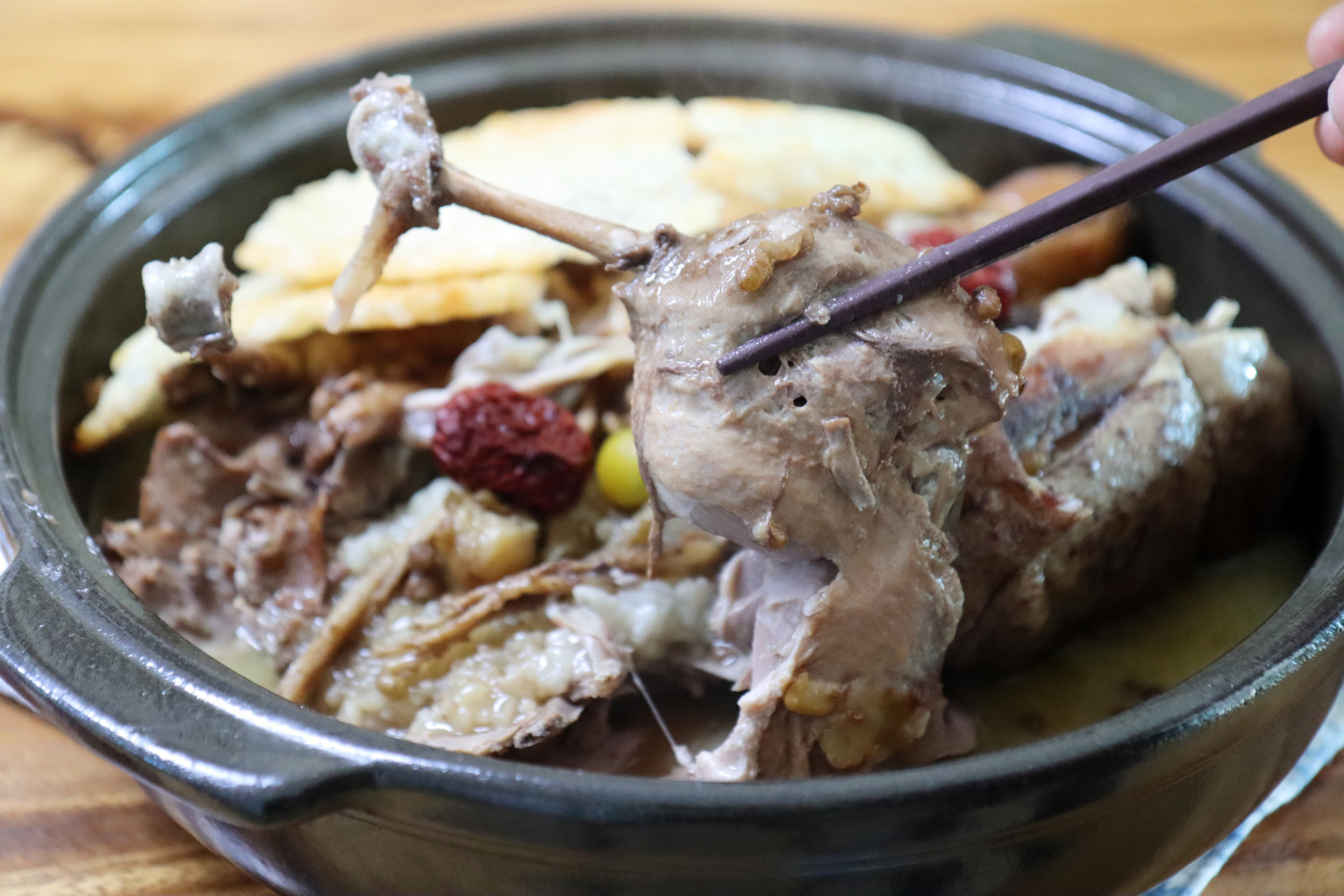Pressure Cooker Duck with Nurungji (Scorched Rice)
Delicious Duck Baek숙 with Scorched Rice, Made Easy in a Pressure Cooker

Instead of the usual Samgyetang (ginseng chicken soup), try this flavorful Duck Baek숙 featuring nurungji (scorched rice) for an even richer taste. Using a pressure cooker makes this nourishing dish incredibly tender and minimizes any gamey odors from the duck. The combination of chewy yet tender duck, soft glutinous rice, and the nutty aroma of nurungji creates a delightful experience for the whole family. This recipe is perfect for those seeking a special, healthy meal that’s both comforting and satisfying.
Main Ingredients- 1 whole duck (approx. 1.7kg)
- 100g glutinous rice
- 100g mung beans
- 1 piece of nurungji (scorched rice), adjust to preference
Cooking Instructions
Step 1
First, rinse 100g of glutinous rice thoroughly and soak it for about 2 hours. Drain the soaked rice well in a sieve to remove excess water. This ensures the rice inside the duck doesn’t become mushy and cooks up fluffy.

Step 2
Rinse 100g of mung beans lightly under running water, just enough to remove surface dust. Avoid washing them too vigorously, as this can wash away some of their flavor.

Step 3
Wash 120g of Acanthopanax root, 60g of Oriental Angelica root, and 50g of Hovenia dulcis branch under running water to remove any dirt or debris. If you’re concerned about bitterness, a light rinse is sufficient.

Step 4
Peel and rinse 150g of whole garlic cloves. Garlic is essential for removing any gamey smell from the duck and adds a wonderful depth of flavor.

Step 5
Wash 8 red dates and remove their stems. You can remove the pits for easier eating, but leaving them in is also fine.

Step 6
Peel and rinse 5 ginkgo nuts. Ginkgo nuts add a pleasant nuttiness and a slight textural contrast.

Step 7
Trim the root tip (or ‘ginseng head’) of the ginseng root and rinse it gently under running water. The saponins in ginseng will further enhance the health benefits of the duck.

Step 8
Prepare 1 piece of nurungji (scorched rice) by breaking it into bite-sized pieces. The nurungji will soften as it cooks, adding a rich, toasty flavor to the broth.

Step 9
Rinse the prepared duck thoroughly, both inside and out, under cold running water. Ensure all internal organs and blood are removed to prevent any off-flavors. Briefly blanching the duck in boiling water can further help in removing impurities.

Step 10
Carefully stuff the drained glutinous rice into the cavity of the cleaned duck. Don’t overfill, as the rice will expand during cooking.

Step 11
Place the ginseng root, ginkgo nuts, about 10-15 garlic cloves, and 3 red dates inside the duck cavity on top of the rice. As the duck cooks, the juices will infuse the rice and aromatics, creating a richer flavor.

Step 12
To keep the duck’s shape and prevent the stuffing from spilling out, tie the legs and body together securely using kitchen twine or skewers.

Step 13
Line the bottom of the pressure cooker with the washed Acanthopanax root, Oriental Angelica root, and Hovenia dulcis branch. These herbs will infuse the broth with their medicinal properties and help tenderize the duck.

Step 14
Add the rinsed mung beans and the remaining 5 red dates on top of the herbs. Pour in 2.5L of water. The mung beans will contribute to a thicker, more savory broth.

Step 15
Carefully place the stuffed and tied duck into the pressure cooker, nestled among the other ingredients. Ensure there’s enough water to mostly cover the duck.

Step 16
Securely close the pressure cooker lid. Bring to high heat until the pressure regulator starts to whistle or jiggle. Once it begins, reduce the heat to medium and cook for 30 minutes. After 30 minutes, reduce the heat to low and cook for an additional 10 minutes. This pressure cooking method ensures the duck becomes exceptionally tender and the broth becomes deeply flavorful.

Step 17
Once the pressure has completely released from the cooker (wait until the steam stops and the regulator can be safely opened), carefully remove the lid. Take out the cooked duck baeksuk and place it on a serving platter. Carve the duck into serving pieces and remove any kitchen twine or skewers used for stuffing. Serve hot with the broth and the prepared nurungji on the side.




